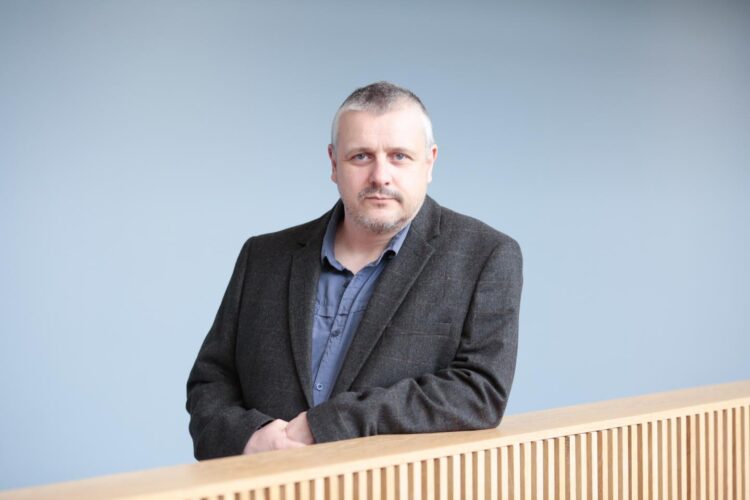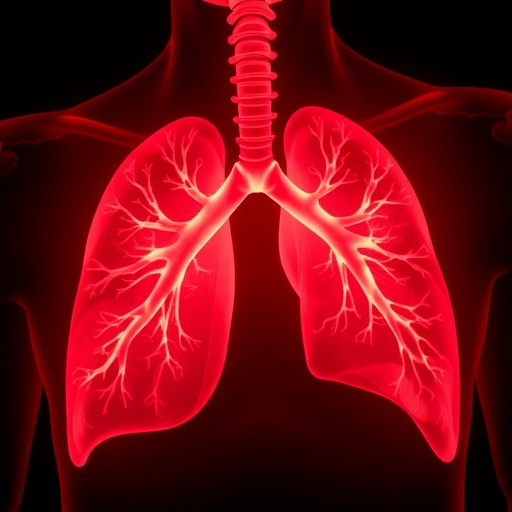
Credit: University of Stirling
Environmental biologists at the University of Stirling have warned that the potential spread of COVID-19 via sewage “must not be neglected” in the battle to protect human health.
The response to the global pandemic has focused upon preventing person-to-person transmission, however, experts now believe the virus could also be spread in wastewater.
Earlier this week, it emerged that analysis of sewage in the UK could provide important data on the spread of COVID-19. However, Professor Richard Quilliam’s new paper – published today [Wednesday 6 May] – now warns that the sewerage system itself could pose a transmission risk.
Writing in the prestigious journal Environment International, Professor Quilliam and colleagues from Stirling’s Faculty of Natural Sciences are calling for “an investment of resources” to investigate their concerns.
Professor Quilliam – who is currently leading a £1.85 million study into the transport of bacteria and viruses in marine environments – said: “We know that COVID-19 is spread through droplets from coughs and sneezes, or via objects or materials that carry infection. However, it has recently been confirmed that the virus can also be found in human faeces – up to 33 days after the patient has tested negative for the respiratory symptoms of COVID-19.
“It is not yet known whether the virus can be transmitted via the faecal-oral route, however, we know that viral shedding from the digestive system can last longer than shedding from the respiratory tract. Therefore, this could be an important – but as yet unquantified – pathway for increased exposure.”
The authors of the peer-reviewed paper presented the example of the severe acute respiratory syndrome (SARS) outbreak in 2002-2003, when SARS-CoV-1 – closely linked to the COVID-19 virus strain (SARS-CoV-2) – was detected in sewage discharged by two hospitals in China.
Professor Quilliam highlights that, as most COVID-19 patients are asymptomatic or experience just mild symptoms and remain at home – not in hospitals, there is significant risk of “widespread” distribution through sewers.
Professor Quilliam authored the paper alongside Professor Manfred Weidmann, Dr Vanessa Moresco, Heather Purshouse, Dr Zoe O’Hara, and Dr David Oliver.
The biologists said a lack of testing “makes it difficult” to predict the scale of the potential spread and the public health implications of the virus arriving at wastewater treatment works, whilst the implications of consequent discharge into the wider environment are only just beginning to be investigated.
They added that the structural makeup of COVID-19 – specifically its lipid envelope covering – suggests that it will behave differently in aqueous environments, compared to other viruses typically found in the intestine. There is currently limited information on the environmental persistence of COVID-19, but other coronaviruses can remain viable in sewage for up to 14 days, depending on the environmental conditions.
On the risk of human exposure, the authors said: “The transport of coronaviruses in water could increase the potential for the virus to become aerosolised, particularly during the pumping of wastewater through sewerage systems, at the wastewater treatment works, and during its discharge and the subsequent transport through the catchment drainage network.
“Atmospheric loading of coronaviruses in water droplets from wastewater is poorly understood but could provide a more direct respiratory route for human exposure, particularly at sewage pumping stations, wastewater treatment works and near waterways that are receiving wastewater.”
Risk could be further increased in parts of the world with high levels of open defecation, or where safely managed sanitation systems are limited and waterways are used as both open sewers and sources of water for domestic purposes.
“Such settings are commonly accompanied by poorly resourced and fragile healthcare systems, thus amplifying both exposure risk and potential mortality,” the authors said.
Currently, all published data on faecal shedding of SARS-CoV-2 derive from hospitalised patients – with limited information available on mild and asymptomatic cases. The paper concludes: “In the immediate future, there needs to be an investment of resources to improve our understanding of the risks associated with faecal transmission of SARS-CoV-2, and whether this respiratory virus can be disseminated by enteric transmission.
“Understanding the risk of spread via the faecal-oral route, while still at a fairly early stage of the pandemic, will allow more evidence-based information about viral transmission to be shared with the public. Furthermore, the risks associated with sewage loading during the remainder of the COVID-19 outbreak need to be rapidly quantified to allow wastewater managers to act quickly and put in place control measures to decrease human exposure to this potentially infectious material.
“At a time when the world is so focused on the respiratory pathways of a respiratory virus, understanding the opportunities for SARS-CoV-2 to be spread by the faecal-oral route must not be neglected.”
###
The paper, COVID-19: The environmental implications of shedding SARS-CoV-2 in human faeces, is published in Environment International.
It is one of several COVID-19 studies led by University of Stirling experts – with the Faculty of Health Sciences and Sport and Faculty of Social Sciences receiving almost £500,000 in Scottish Government funding for 10 major projects on the virus impact.
Media Contact
Greg Christison
[email protected]
Related Journal Article
http://dx.





